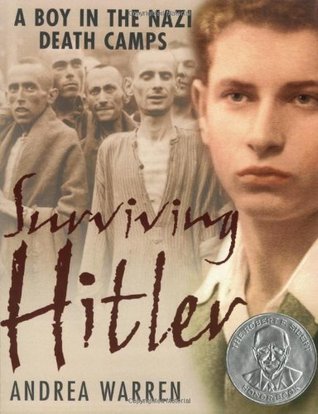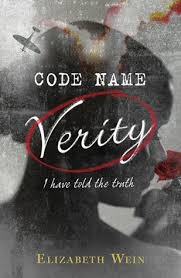
The Nazi Hunters:How a Team of Spies and Survivors Captured the World's Most Notorious Nazi
Written by Neal Bascomb
Published in 2013 by Arthur A. Levine Books
Ages 12 and up | Grades 7 and up
ISBN: 978-0545430999
Awards
YALSA Award for Excellence in Nonfiction (2014)
Camellia Award: Alabama Children's Choice Book Award Nominee for 6-8 Nonfiction (2014)
Review
Neal Bascomb's narrative nonfiction piece details the events leading up to the capture of Adolf Eichmann, the head of operations for the Nazis' Final Solution. At the end of World War II Eichman, along with many other Nazi soldiers, disappeared from Austria into the German mountains escaping capture for his war crimes. The Nazi Hunters chronlcles the events as Holocaust Survivor Simon Wiesenthal opens Eichmann's case and follows the journey the led the Mossad agent, a group Isreali spies, to Argentina where Eichman was apprehended, tried in Isreali court, and ultimately brought to justice. Readers will be on the edge of their seat with this thrilling, suspenseful, and moving novel.
Professional Reviews
School Library Journal
Teen Reads
Teaching Ideas
Visual Arts
1. AI.17: The student will analyze how media and visual organization in works of art affect the communication of ideas.
Students will analyze various pieces of World War II propaganda in art and interpret or convey the intended message, audience, etc. Pieces will be shown from the United States, Japan, Germany, and other European countries.
Health & Economics and Personal Finance
2. 10.1 a: The student will demonstrate an understanding of health concepts, behaviors, and skills that reduce health risks and enhance the health and wellness of self and others throughout life. Key concepts/skills include the impact of healthy and poor nutritional choices.
EPF.1a: The student will demonstrate knowledge of basic economic concepts and structures by describing how consumers, businesses, and government decision makers face scarcity of resources and must make trade-offs and incur opportunity costs.
Students will learn about the nationwide food rationing that was instituted in 1942 and how ration stamps became a form of currency. Students will make a list of the foods and goods that were rationed during WWII, comparing the costs of them before, during, and after the war along with the cost today. Students will then discuss the implications of food rationing and its effects on the body.
Computer Technology
3. C/T 9-12.1a: Demonstrate an operational knowledge of various technologies; use various types of technology devices to perform learning tasks.
Students will examine the Holocaust from a chronological perspective and use a timeline creation tool to create a timeline of Holocaust events related to a survivor's story.
English & Computer Technology
4. 11.8: The student will analyze, evaluate, synthesize, and organize information from a variety of sources to produce a research product.
C/T 9-12.9: Plan and apply strategies for gathering information, using a variety of tools and sources, and reflect on alternate strategies that might lead to greater successes in future projects.
Students will compare articles about human rights and prejudice from current news sources to the situation in WWII Germany during the Holocaust.
World History and Geography & Computer Technology
5. WHII.12b: The student will demonstrate knowledge of the worldwide impact of World War II by examining the Holocaust and other examples of genocide in the twentieth century.
C/T 9-12.16a: Apply knowledge and skills to generate innovative ideas, products, processes, and solutions; use various creative software, programming environments, or digital tools to convey existing ideas in new and effective ways.
In this inquiry lesson, students will create questions about the Holocaust and will then use primary sources (artifacts, documents, biographical references, maps, photographs, etc.) to research and answer their question. Students will then present their inquiry using a Wiki or other presentation tool of their choice.
Partner Titles

The Book Thief by Markus Zusak tells the story of Leisel Meminger, a foster girl in 1939 Nazi Germany. Nine year old Leisel develops a close relationship with Hans, her foster father, as he begins to teach her how to read. This leads Leisel on a mission to steal books that the Nazi party seeks to destroy. Readers will be moved as they watch Leisel evolve into an avid reader, realizing the power of the written word and and its effects on the soul during trying times. This book was chosen because it was a 2007 Michael L. Printz Award Nominee and because the historical context of censorship during WWII Germany. It also is of high interest to students because of its graphic novel format. (Kirkus Review)

The Complete Maus I & II by Art Spiegelman recounts the story of Holocaust survivors Vladek Spiegelman and his wife Anna, the author's parents. Told through graphic novel format, the story conveys the events leading to Vladek and his wife's arrival at a concentration camp, their experiences while there, and the afrermath. Like George Orwell's Animal Farm, Maus I & II portray characters in animal form; the Jewish characters are mice, the German characters are cats, the Polish characters are pigs, the French characters are frogs, and the American characters are dogs. The book was chosen because of the high interest of the subject matter and graphic novel format. It was also chosen because of the firsthand perspective it presents. (Kirkus Review)

Surviving Hitler by Andrea Warren introduces readers to twelve-year-old Jack Mandelbaum as he is separated from his family and shipped off to the Blechhammer concentration camp. The story highlights the dark reality of life in concentration camps, with minimal food and water, unsanitary living conditions, and intense labor. This title was chosen for because it is told from memories of Holocaust survivor Jack Mandelbaum and will be of high interest to students, and because it is a 2004 William Allen White Children's Book Award winner. (Kirkus Review)

The Boy in the Striped Pajamas by John Boyne tells the story of Bruno, a nine year old boy living in Berlin. The son of a Nazi commandant during World War II, Bruno's family moves from Berlin to Auschwitz as his father becomes the officer in charge of the prison camp. While there Bruno meets a boy named Shmuel, a prisoner of the camp, an the two begin a friendship. Readers will experience a wave of emotions as Bruno learns about the nature of man and his fate takes a tragic turn. This book was chosen because it is a 2009 Young Reader's Choice Award winner and because it will be of high interest to students because it is told from the point of view of a child. (Kirkus Review)

Code Name Verity by Elizabeth Wein gives readers a twist on historical fiction. Opening with two British female spies in a plane crash in Nazi-occupied France, the main character, "Verity," is captured by the Gestapo. Readers will enjoy the mind games of the plot as survial mode is tested when "Verity" must decide whether she should reveal her mission or face execution. This title was chosen because it would be if high interest to students and tells an alternative point of view in historical fiction. Code Name Verity was also a 2012 School Library Journal Best Book of the Year and 2013 Michael L. Printz Award Nominee. (Kirkus Review)
Further Exploration
This YouTube video serves as an introduction to the Holocaust and World War II. Teachers can use this an introductory clip to a unit or students can use this as part of an anticipation guide.
BookTV interviews Neal Bascomb about his novel Hunting Eichmann. The novel, which was the adult predecessor to The Nazi Hunters, recounts the 15 year hunt, capture, and trial of the infamous SS Officer and head of the Final Solution.
The Remember.org website displays Auschwitz Paintings by Survivor Jan Komski, offering visitors to the site a firsthand glimpse into life in the largest concentration camp.
An interview with author Neal Bascomb on the YALSA's website "The Hub" gives readers insight into the inspiration behind the book and why the author chose to revisit the subject of Adolf Eichmann.
StudentGuide.org is a website that offers WWII study guides and materials for students. Visitors to the site can access materials on an overview of the War, important leaders, as well as Hitler and the Holocaust.
The 1993 film, Schindler's List, depicts the true story of Oskar Schindler and his path to saving more than 1,000 Jews during the Holocaust. Students will learn about the Schindler and the dangers he faced as he defied the Nazi party and helped prisoners escape the Krakow ghetto.
References
Bascomb, N. (2013). The nazi hunters. New York: Arthur A. Levine Books.
BookTV. (2009). Book tv: After words: Neal bascomb,
"hunting eichmann". YouTube[video file]. Retrieved from
https://www.youtube.com/watch?v=FzIp045Z9iA.
Boyne, J. (2006). The boy in the striped pajamas. New York: David Fickling Books.
Florida Center for Instructional Technology. (2013).
Holocaust activities. Retrieved from
https://fcit.usf.edu/holocaust/activity/highschl.htm.
Gómez, H. (2014). An interview with 2014 nonfiction
award finalist neal bascomb. Retrieved from
http%3A%2F%2Fwww.yalsa.ala.org%2Fthehub%2F2014%2F01%2F21%2Fan-interview-with-2014-nonfiction-award-finalist-neal-bascomb%2F.
Lawson, C. (2011, October 21). A brief introduction
to the holocaust & world war II. YouTube[video file]. Retrieved from
https://www.youtube.com/watch?v=9VGU9gMoNSA,
PBS.org. (2007). The war: Propaganda media gallery.
Retrieved from https://www.pbs.org/thewar/media_gallery.php.
Remember.org. (2015). Auschwitz paintings by
survivor jan komski. Retrieved from http://remember.org/komski.
Spiegelman, A. (2003). Maus: A survivor's tale. London: Penguin.
Spielberg, S. (Director), Spielberg, S. (Producer),
& Zaillian, S. (Writer). (1993). Schindler's
list [Motion picture on DVD]. United States: Universal Pictures.
StudentGuide.org. (2013). World war II resource
guide. Retrieved from http://www.studentguide.org/world-war-ii-resource-guide/.
The United States Holocaust Memorial Museum. (2015).
Retrieved from http://www.ushmm.org/.
Warren, A. (2001). Surviving Hitler: A boy in the nazi death camps. New York:
HarperCollins.
Wein, E. (2012). Code
name Verity. London: Electric Monkey.
Zusak, M. (2006). The book thief. New York: Alfred A. Knopf.
No comments:
Post a Comment